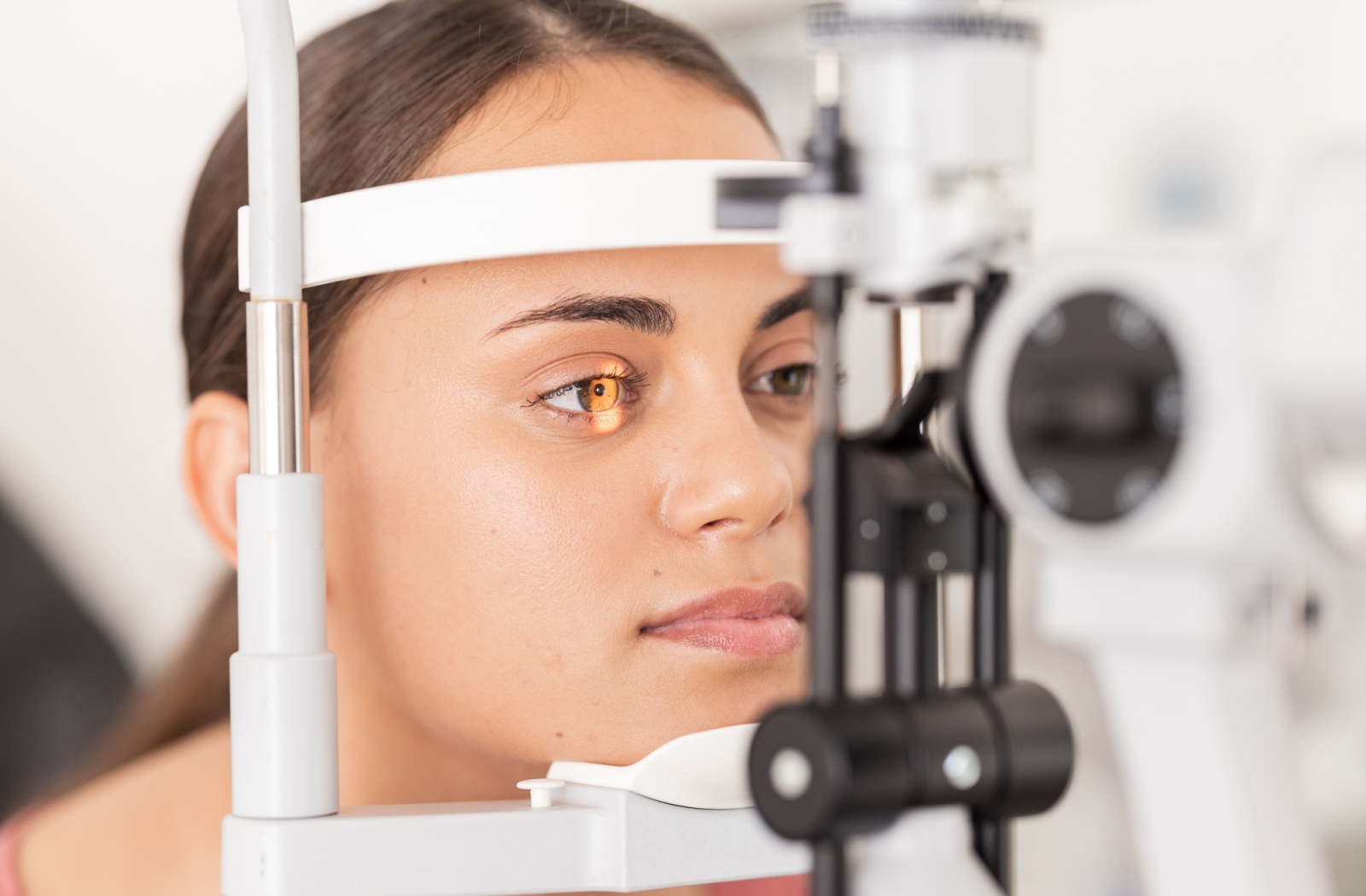Do you frequently experience tension headaches or sore, dry, or tired eyes after a long day? This pain can happen for many reasons, especially when working in front of digital screens.
However, these symptoms may not be from focusing too hard—though it certainly has an effect. Your eyes need to work together to see clearly, and even a minor misalignment can make your eyes work harder, potentially leading to headaches and eye strain. Thankfully, your eye doctor can identify these misalignments and recommend treatments to help, like Neurolens.
Neurolens is a way to help address trigeminal dysphoria, a term describing uncomfortable symptoms like eye strain, headaches, sore shoulders, and more. Your optometrist uses technology to help identify misalignments in your eyes before using specialized lenses to improve visual comfort.
Neurolens may be ideal for your vision if you suffer from frequent tension headaches and eye strain.
What Is Neurolens?
Neurolens is an optical technology that can correct misalignments in the eyes, reducing eye strain and other uncomfortable symptoms.
It features small micro-prisms in your lenses that correct eye misalignment, improving comfort and reducing strain on your brain as it processes visual information.
Some of the symptoms Neurolens can help relieve include:
- Headaches
- Eye strain
- Neck and shoulder pain
- Dizziness
- Light sensitivity
- Dry eyes
Eye Misalignment & Trigeminal Dysphoria
It might surprise you, but eye misalignment can cause tension headaches. When the eyes don’t properly align, the brain works harder to interpret the different images each eye sees. The term for the headaches and strained eyes caused by misalignment is known as trigeminal dysphoria.
Trigeminal dysphoria, though it may sound intimidating, is a condition that often goes unnoticed by many patients. One of the primary causes of this discomfort is eye misalignment. This condition occurs when the brain receives conflicting signals from the eyes.
Your eyes work harder to compensate for this misalignment, constantly making adjustments to see clearly. These adjustments irritate a complex nerve connecting to your brain called the trigeminal nerve.
When working on close-up tasks (like on your computer), overworking the eyes can overstimulate your trigeminal ganglion—a cluster of nerves that send information to the brain, helping you see and focus on nearby objects. It’s common for patients to assume that the eye strain and headaches caused by this overstimulation are another issue, like dry eye disease.
How Does Neurolens Work?
Neurolens is a lens that slightly changes how light enters the eye to improve visual comfort. The lenses you receive during treatment feature contoured prisms that help bend light correctly before it enters your eye.
Contoured prism lenses are a non-invasive solution for patients with eye misalignment. These lenses bend light to correct the eyes’ misalignments, helping light land directly onto the retina.
Because every patient’s situation is unique, contoured prism lenses are specially designed to correct small misalignments in their eyes.
What Can You Expect With Neurolens Technology?
The final lenses you wear are not the only technology involved in the Neurolens treatment process. You must first wear a testing device called the N3, which measures how your eyes track objects at different distances. These measurements help create your custom lenses.
While Neurolens can help you enjoy clear, comfortable vision, working with your optometrist is a several-step process that includes:
- Identifying your eligibility: To begin the treatment process, your optometrist asks many questions to determine your symptoms and their severity.
- Measuring your misalignment: While you wear the N3, your eye doctor measures how your eyes track objects to assess your binocular vision.
- Prescribing your lenses: After measuring your eyes with the N3, your optometrist uses this data and your prescription to create your lenses.
Is Neurolens Right for Your Needs?
While Neurolens can benefit many patients, it isn’t for everyone. The best way to learn if this treatment is right for your needs is to visit your optometrist. During an eye exam, they can help determine if your symptoms occur due to eye misalignment.
They’ll ask about what symptoms you’re experiencing. Some common signs of eye misalignment include:
- Headaches
- Eye strain
- Neck and shoulder pain
- Dizziness
- Light sensitivity
Your eye doctor will begin treatment if you’re eligible for Neurolens. However, there’s nothing to worry about if eye misalignment isn’t the cause of your irritation—your optometrist will work with you to find a way to relieve your symptoms.

Enjoy Comfortable Vision
Headaches and sore eyes don’t need to be a guarantee at the end of a long day. While resting your eyes can help, addressing the source of your irritation can help relieve your symptoms. Your optometrist can recommend Neurolens during a comprehensive eye exam if it is ideal for your needs.
Contact Eye Care Center of Colorado Springs if you’re interested in Neurolens. We can help you find the best way to enjoy clear, comfortable vision.


